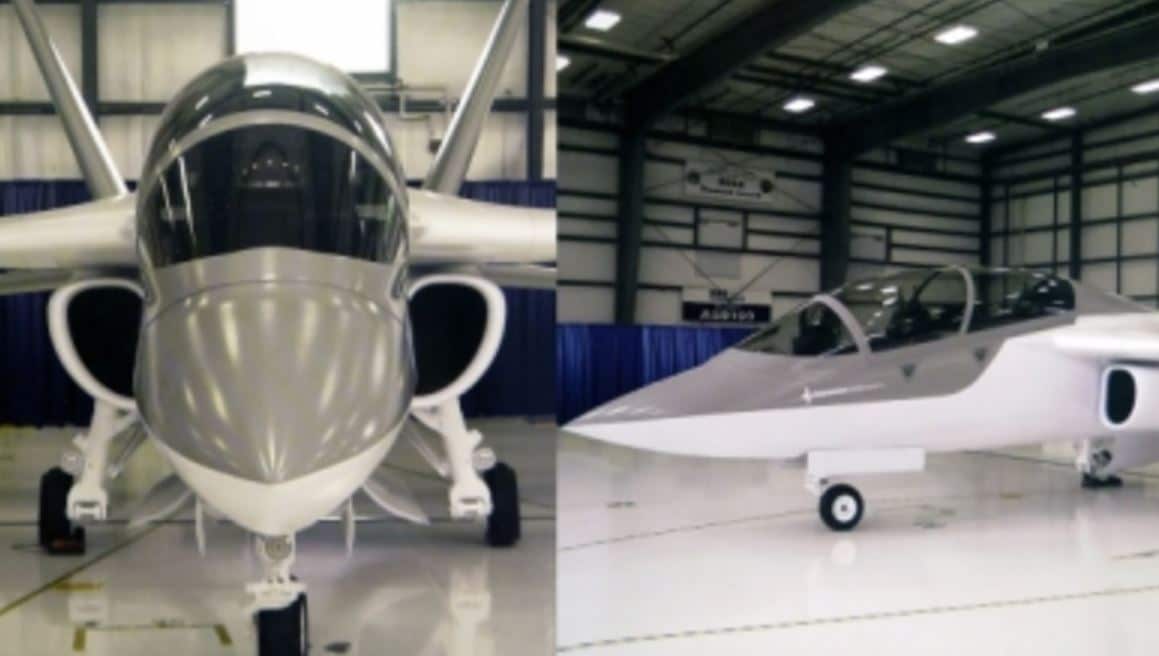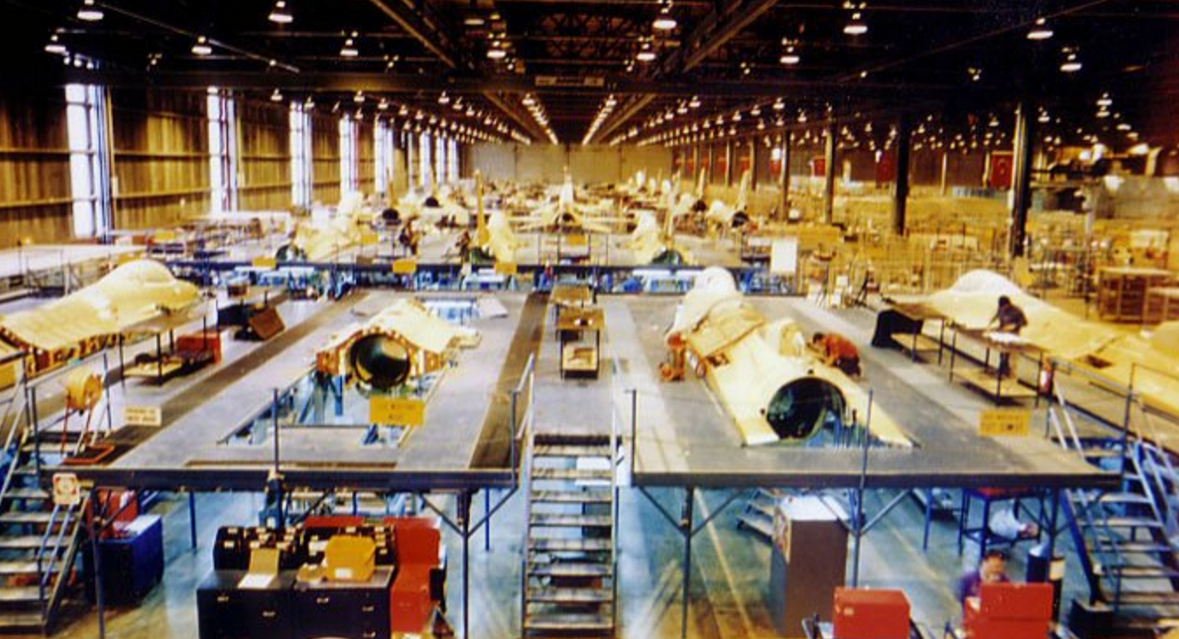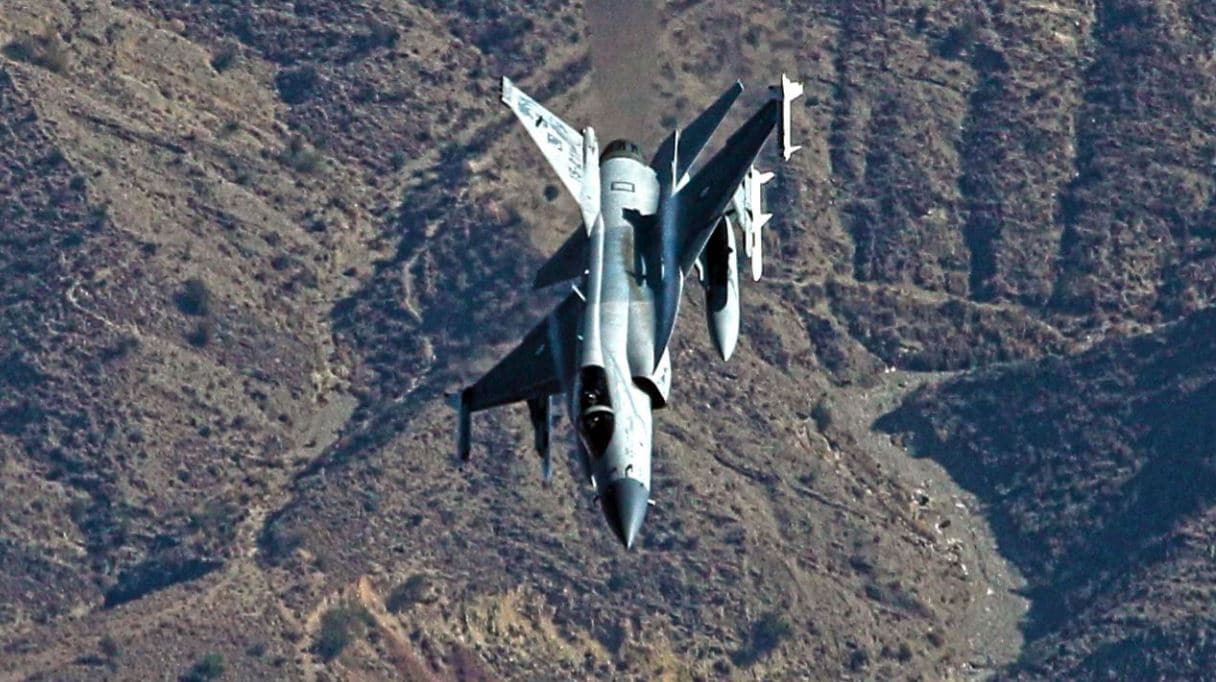2257Views 2Comments

Sierra Nevada Corp. and TAI progress with T-X Freedom Trainer development
Aviation Week (subscription required) was provided photographs of the first Freedom Trainer prototype. Collaboratively developed by Sierra Nevada Corporation (SNC) and Turkish Aerospace Industries (TAI), the Freedom Trainer is being pitched for the U.S. Air Force’s (USAF) T-X lead-in fighter-trainer (LIFT) tender.
SNC and TAI designed the Freedom Trainer to be a relatively low-cost solution both in terms of acquisition and life-cycle maintenance. Built with an all-composite airframe and fully digital fly-by-wire flight control system, the Freedom Trainer is powered by two Williams International FJ44-4M turbofan engines, each with a thrust output of 16.01 kN, cruise speed of 833.4 km/h and range of 3,700 km.
The Freedom Trainer was designed to fulfill the T-X’s core requirements, including the 6.5g-7.5g sustained turn and high angle-of-attack. However, SNC and TAI are aiming to differentiate the Freedom Trainer from its competition on the basis of noticeably lower acquisition and maintenance costs.
To control cost and complexity, SNC and TAI will omit weaponization from the Freedom Trainer. Instead, the Freedom Trainer will digitally simulate air warfare experiences. Likewise, the Freedom Trainer utilizes open architecture for subsystems integration, low-cost engines and off-the-shelf components (COTS).
“In this day of tight budgets and looming operations and sustainment bow waves, it only makes sense for the Air Force to spend less up-front so they can save more over the life cycle, which is why this training system makes so much sense,” said SNC CEO Fatih Ozmen to Aviation Week in 2016.
In August, TAI’s CEO Temel Kotil announced that TAI was developing a jet-powered trainer – designated the “Hürjet” – to complement the Hürkuş trainer. Kotil did not specifically mention the SNC-TAI project, but the Freedom Trainer is likely to be a leading proposal for the Hürjet. The TAI Hürjet will take aim at the Turkish Air Force’s aging T-38 Talon trainers in the advanced training and fighter conversion roles.
Notes & Comments:
The Freedom Trainer (and potentially Hürjet) is a unique approach to the development of LIFT platforms, which, since the 1990s, have seen the rise of trainers bordering on light multi-role fighter capabilities. This is evident in the T-50/FA-50 Golden Eagle, M-346 Master and L-15 Falcon. However, the capability surge of these platforms also carries high cost, especially in terms of lifecycle and maintenance costs.
In 2015, the Pakistan Air Force’s (PAF) Chief of Air Staff (CAS) Air Chief Marshal (ACM) Sohail Aman stated that the PAF was not interested available LIFT platforms due to the relatively high cost. In the CAS’ view, the cost of flying the T-50 and L-15 were too high relative for the intended role, which is currently being held by the K-8 and (as per aviation journalist Alan Warnes) the FT-7P.
In five to ten years, the Freedom Trainer/Hürjet could emerge as a viable advanced training option for the PAF and other air arms thinking along similar lines. It may not be as costly as the T-50 or L-15, but it would also carry demonstrable performance improvements and technology advancements (suitable for training pilots for next-generation fighters) over the K-8, M-345 and L-39NG.
SNC and TAI are banking on the world market as a contingency in case the Freedom Trainer is not selected for the T-X bid. Certain aspects of the Freedom Trainer seem to be steered towards that eventuality. For example, while selected for managing cost, the Williams FJ44-series is also free from ITAR (International Traffic in Arms Regulations) restrictions. This enables SNC and TAI to readily offer the platform to a wide array of prospective customers with relatively limited regulatory barriers in the U.S.



2 Comments
by Inco Acun
[url=https://hizliresim.com/qJlqB3][img]https://i.hizliresim.com/qJlqB3.jpg[/img][/url]
[url=https://hizliresim.com/9D5XL9][img]https://i.hizliresim.com/9D5XL9.jpg[/img][/url]
Just released
by Steve
With our ongoing COIN requirements it would be good to look at something that can be armed even if it increases costs. Still cheaper than using F16 or JF17.